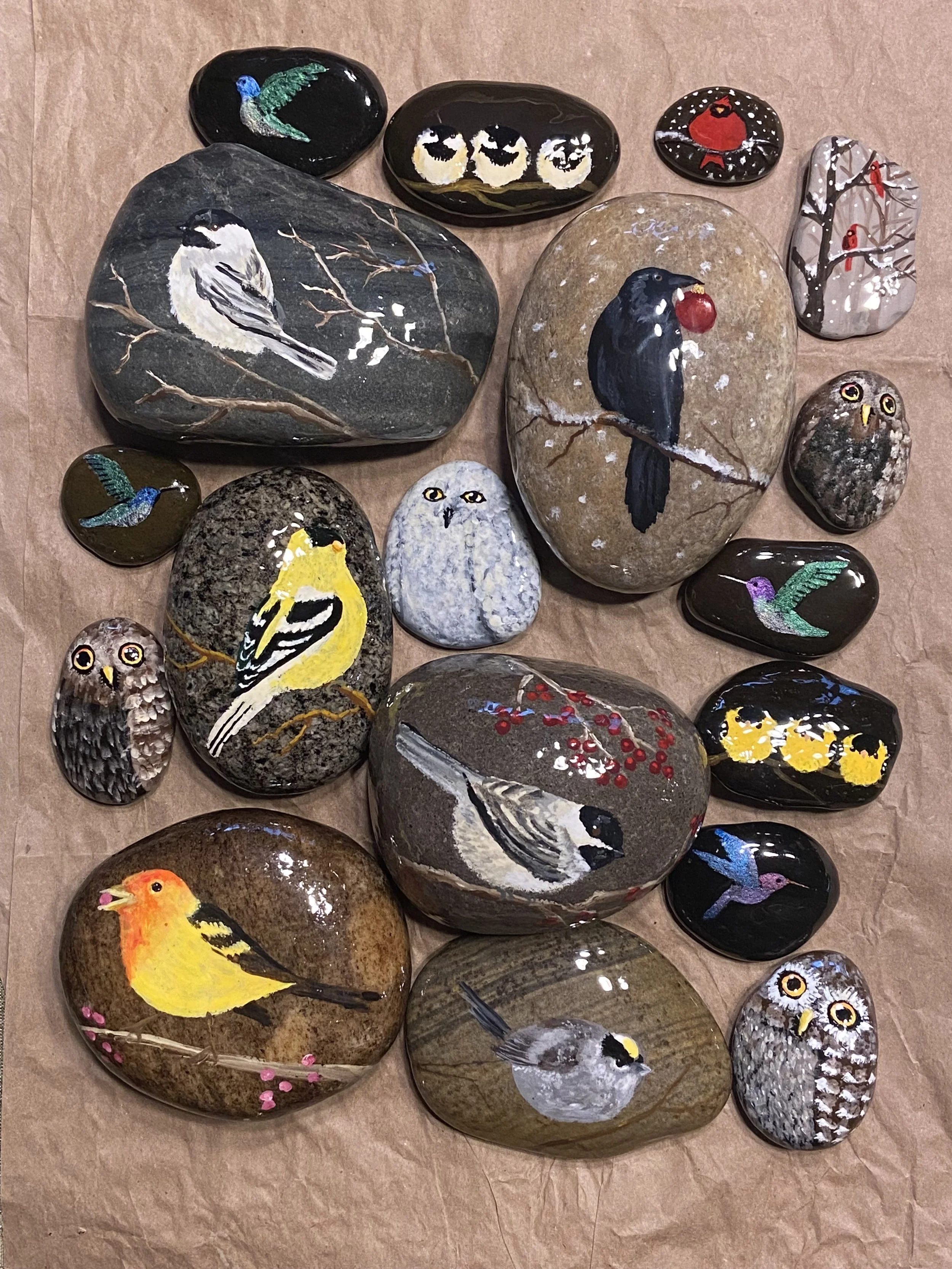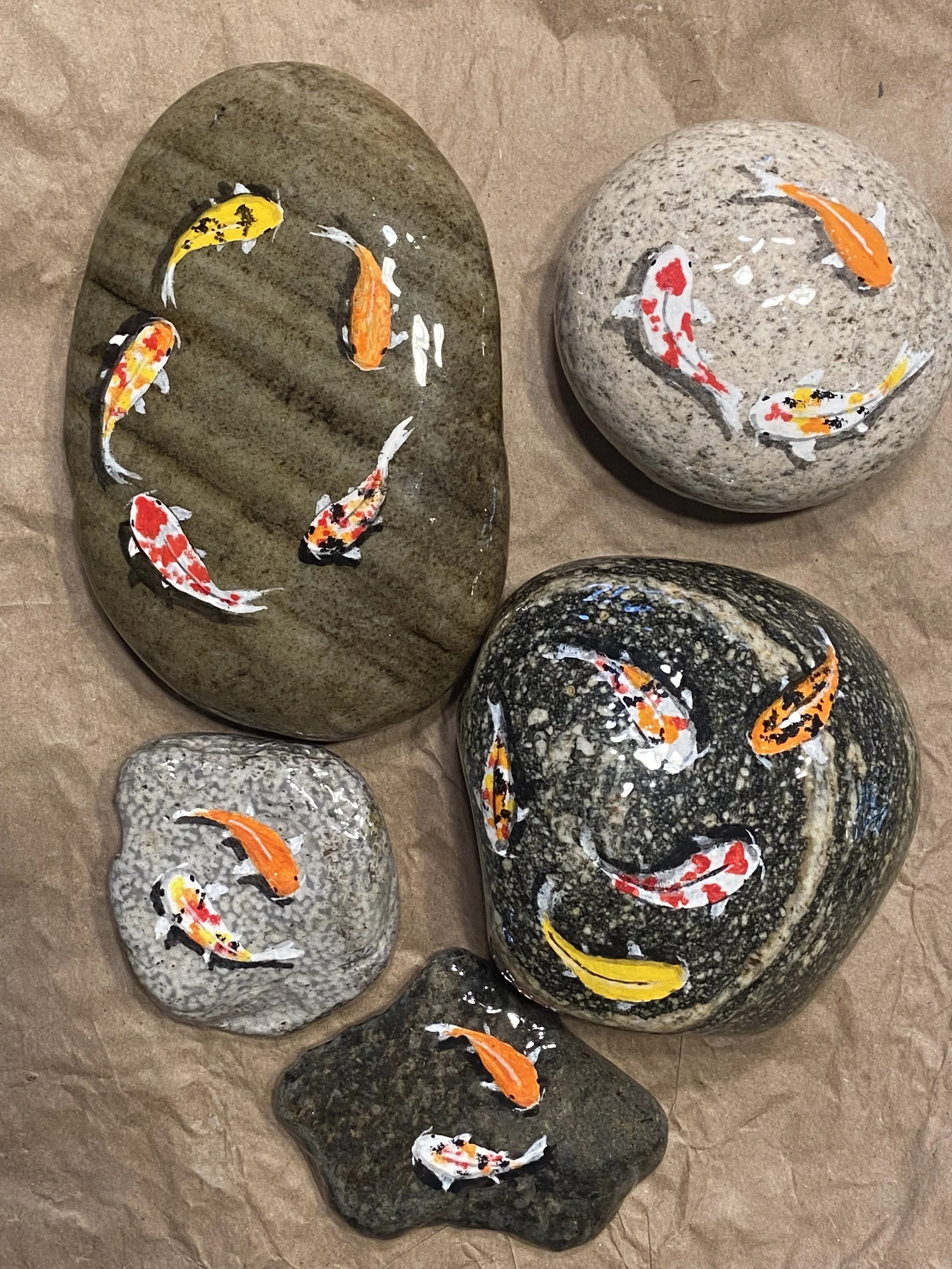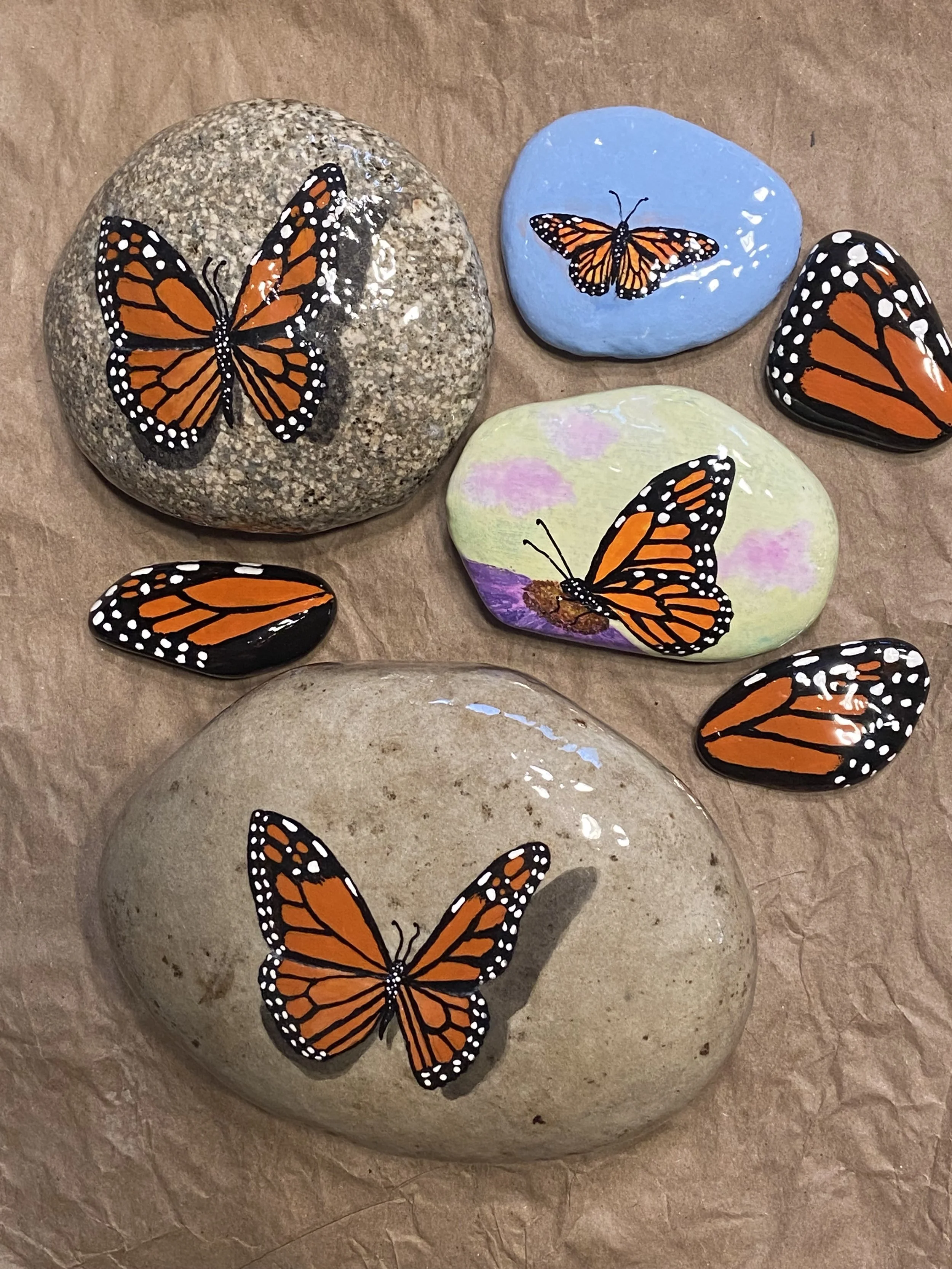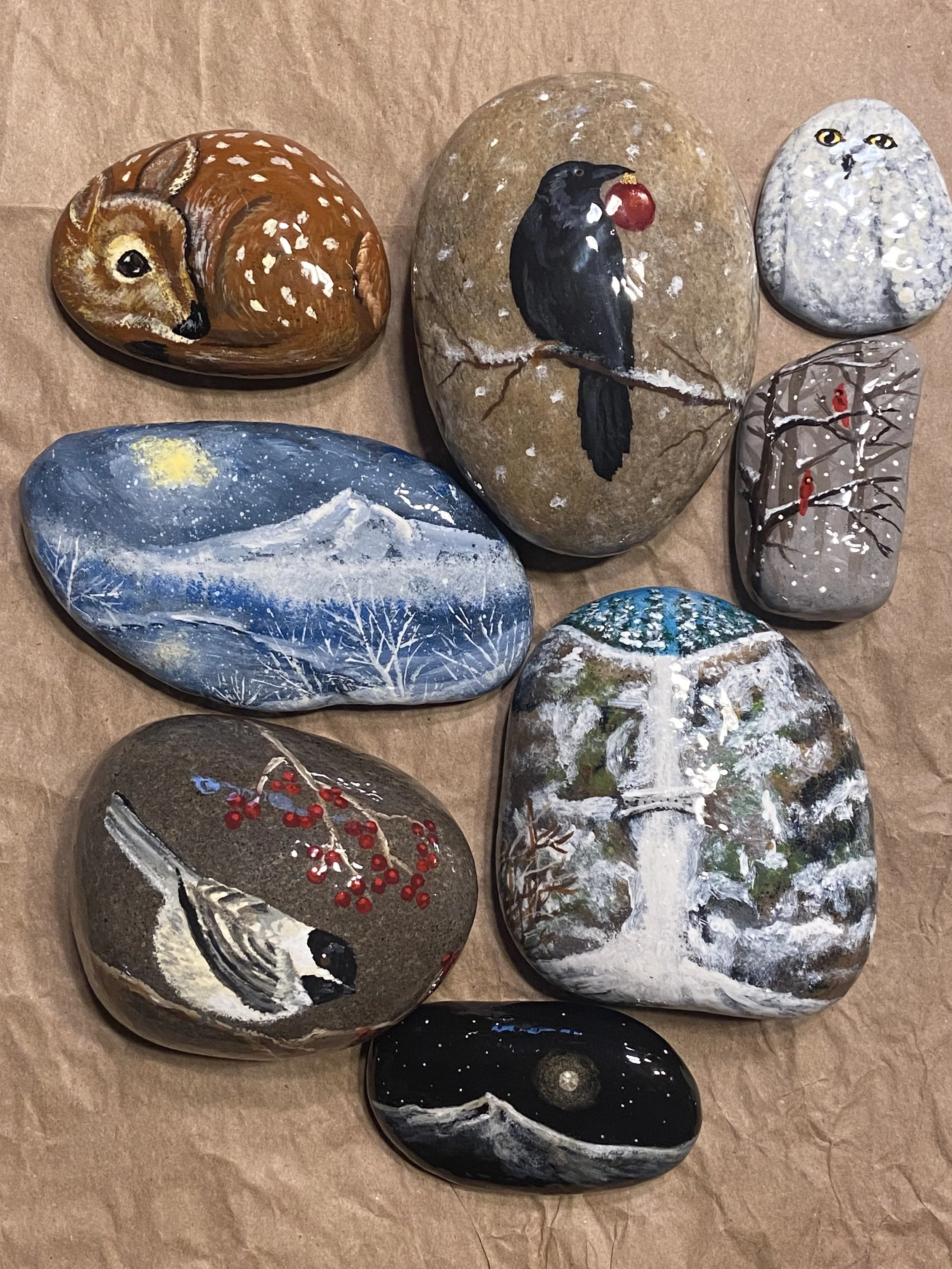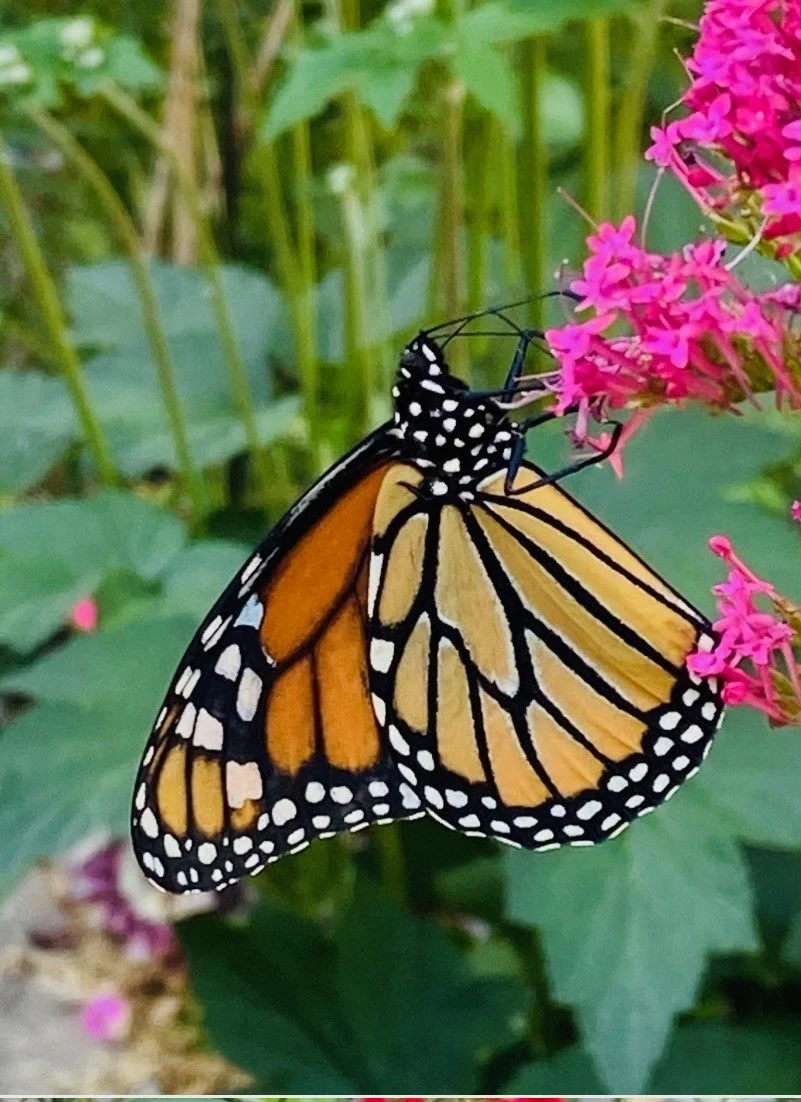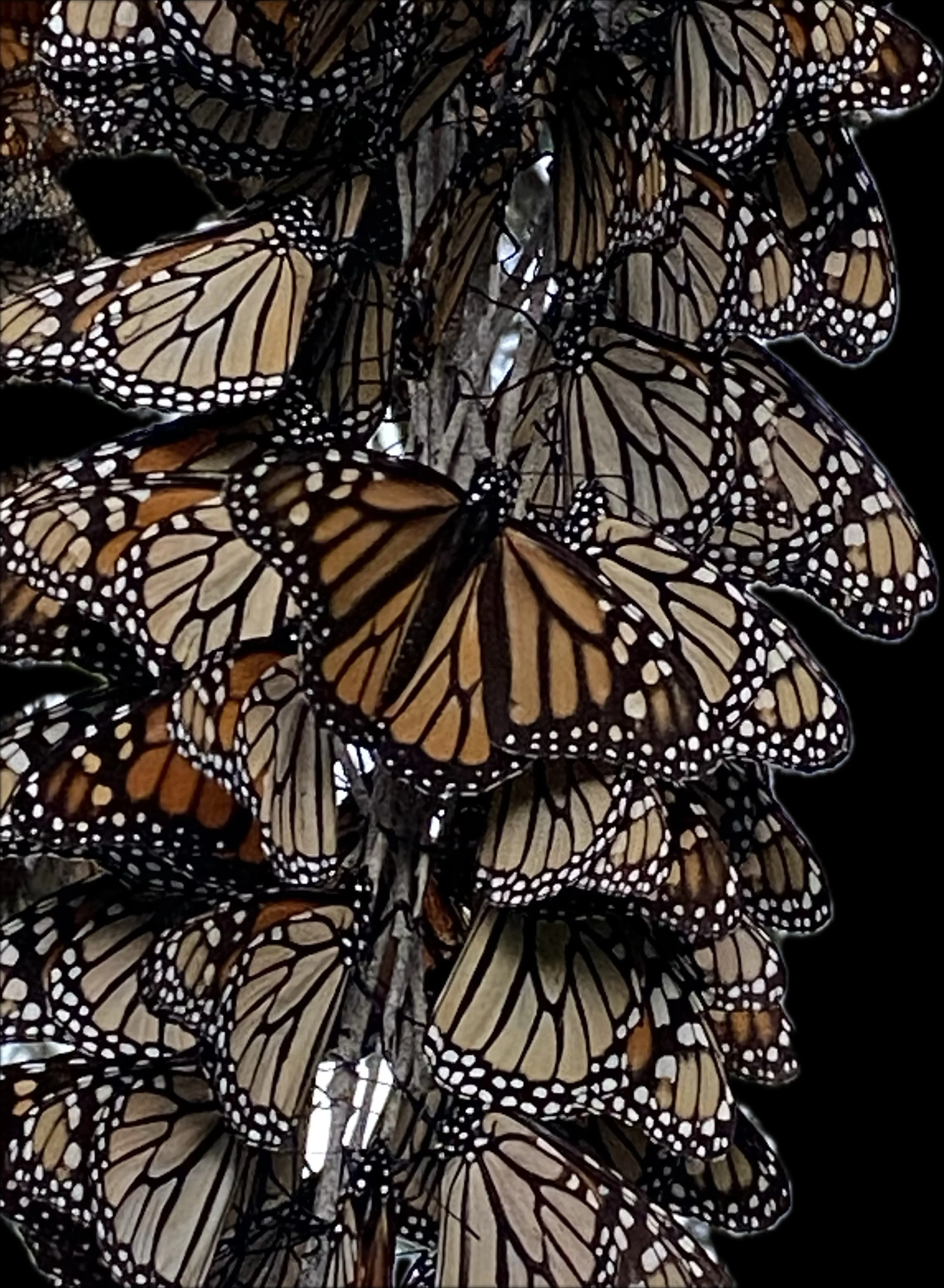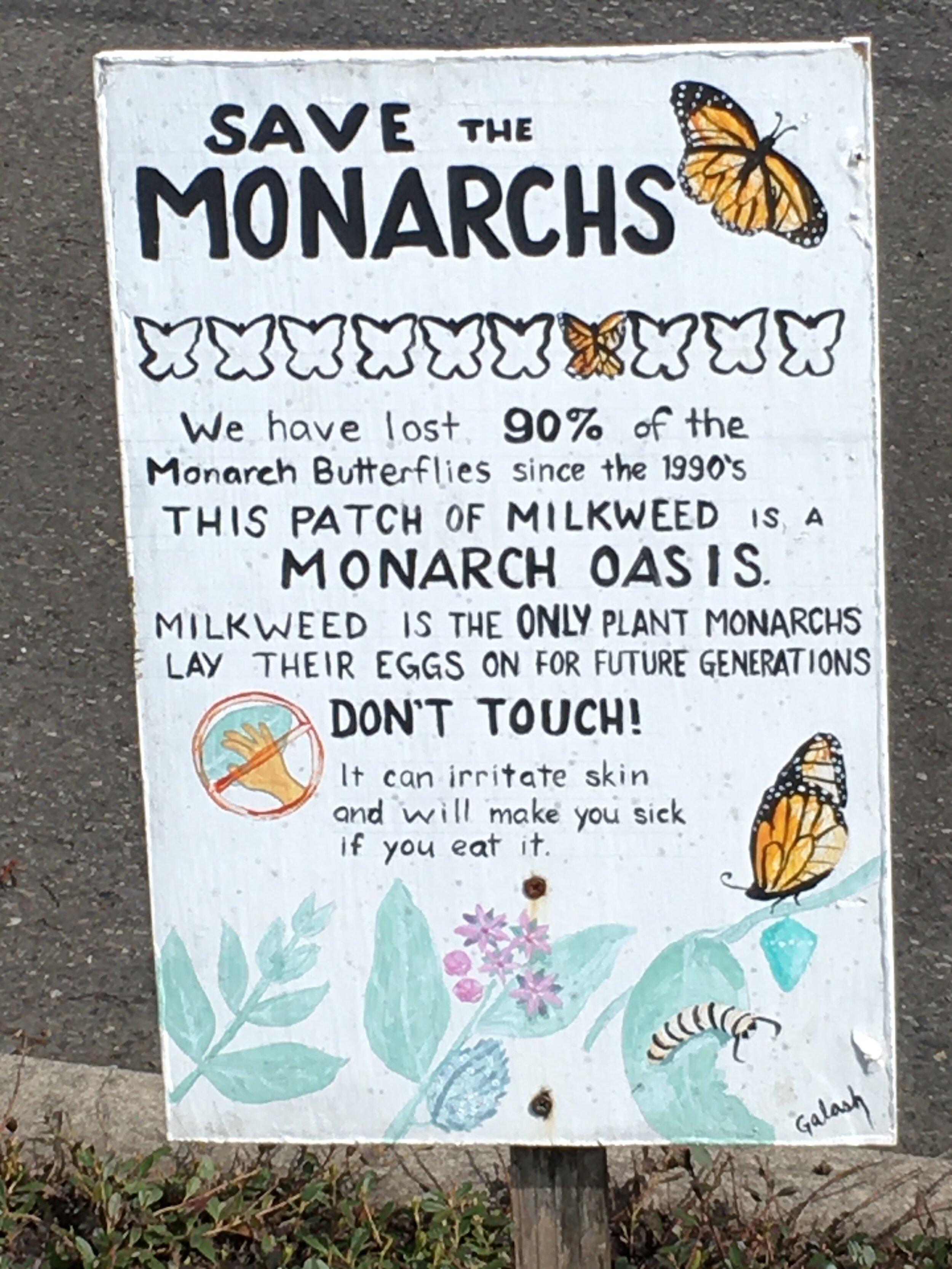
Welcome to
SAVE THE WESTERN MONARCHS
OFFICIALLY A NON-PROFIT!
*
OFFICIALLY A NON-PROFIT! *
Upcoming Events
Rocks for Butterflies
Winter Rock Sale!
Join us for our most fun fundraiser!
Saturday December 6th. 9:00am-2:00pm
Supports Monarch Butterfly and pollinator habitat creation. (Portland Monarchs is a 501 C3 non-profit)
Choose from over 700 hand-painted creations!
2218 NE 22nd Ave
Dr. David James, entomologist at Washing State University and leader of the NorthWest Monarch tagging program, reports that after a promising start to the summer, the number of reported sightings plummeted in August. While unsure of what that means or why this drop happened, the good news is that Monarchs near the GooglePlex in Mountain View, CA have been reported to be reproductive. This is odd as it is unseasonal for the butterflies to be reproducing this time of year; normally being in diapause, a non-reproductive state. The message here is to keep planting native, nectar-rich sources, particularly those which bloom in late summer to support the butterflies on their southern migration.
Western Monarchs in 2025
In 2023, 146 Monarchs were sighted in the PNW between the 15th of August and the 30th of September resulting in an over-wintering population over 233,000. In the same time period in 2024 only 71 Monarchs were sighted, resulting in the second-lowest over-wintering population of just over 9,000 butterflies. This year in the same time frame, there were 105 sightings primarily in Oregon and Idaho, almost 48% increase. This potentially could mean an over-wintering population of about 13,000 butterflies. We can all hope for a mild storm season on the California coast this winter. Looking forward to the Thanksgiving and New Year’s over-wintering counts.
The Portland Monarchs Shop:
where every purchase supports our efforts to help the Monarch.
Or support our efforts with a direct gift:
Venmo @portland-monarchs
Your support helps us pay for website costs, give away milkweed seeds, spread awareness, create habitat, and more!

Volunteer to help care for the Monarch Butterfly habitat at Pittock Mansion!
Click to sign up! —>
2024 Monarch Counts
It’s a Monarch Summer!
In Oregon, In 2023 a total of 12 Monarchs were reported to iNaturalist between the end of May and Solstice (June 21). For the same timeframe in 2024, 39 have been reported and the observations keep coming in! Pictured is a female that laid eggs in my NE Portland, OR garden on June 19, 2024. Be sure to keep your phone/camera handy to report your Monarch sightings to iNaturalist, Journey North, and Western Monarch Milkweed Mapper. The monarchs that are in the area now will stay and use this as their breeding ground. It is their offspring that will make the migration to California at the end of the season.
New Year’s Western Monarch Count
For 2024 New Year’s count, volunteers observed 256 overwintering sites for a total of approximately 233,390 Monarch Butterflies! Keep planting nectar flowers and milkweed to help rebuild our flying friends’ population!
Portland Parks and Recreation Partnership Updates
Thanks to all the volunteers who came out to the Pittock Mansion Monarch habitat volunteer days this past spring! If you are interested in volunteering in the future,
2023 Monarch Count
Rebound! Numbers of reported sightings in the PNW show the resilience of the Monarch Butterflies following California’s winter storms.
Portland is proving to be a hotspot for the Summer of 2023.
“This Summer’s ‘rebound’ suggests the over-wintering population in California this year will be almost as good as the amazing 335,000 counted last winter. Which, in itself, was the best since 2000. So, there is a lot to be optimistic about and all that we are doing as enthusiastic citizens is working!”
-Dr. David James, WSU
Monarchs at El Rosario Biosphere Sanctuary in Michoacán State, México. February 28th, 2023. The Eastern population of Monarchs generally overwinter in the Oyamel Fir Forests in the central mountains of México.
A cluster of Monarchs near San Luis Obispo, CAInternational Western Monarch Summit 2023
One of the most important take-aways from this past year’s Summit is that there are two key steps to help our Monarchs right now! First, stop using chemicals in the garden, particularly pesticides/insecticides, especially neonicotinoids which can persist for years in the soil. Second, plant Monarch habitat which includes native milkweeds and plenty of nectar-rich flowers, including an abundance of those which bloom in late summer and fall to fuel their southern migration and help them survive the long winter.
Monarchs “puddling,” an act where butterflies collect essential minerals and moisture from damp patches of bare ground.
2022 Monarch Counts
Thanksgiving count 2022, news from the over-wintering grounds:
While the official count won’t be available until late January 2023, the unofficial word is that over 300,000 Monarchs have been counted with 183 sites reporting. Over-wintering numbers haven’t hit 300,000 since the year 2000! While still far below the historic millions, this is fantastic news! If all goes well, this could lead to a significant increase in the 2023 Summer breeding population. We are cautiously optimistic. No doubt this will be a major topic at the upcoming International Western Monarch Summit.
Monarch Sightings in the Portland Area are Greater Than They Have Been in YEARS!
Monarch Butterflies are in Portland summer 2022! We have had more reported sightings this year than in the past several years combined! If you see any signs of a Monarch butterfly - black and orange wings with white speckles along the edges, small, semi-translucent, off-white eggs on the undersides of milkweed leaves - report with a photo to iNaturalist.
The more reports we get, the more we can understand the habits of the majestic, magnificent Monarch. Get our Monarch counts up!
“How many Monarchs have you seen in the PNW this summer? The odds are that you’ve seen at least one and many of you have seen a lot more! Thank you to everyone that has reported seeing them, here, and on the official recording sites like Journey North, Monarch and Milkweed Mapper and I-Naturalist. Please keep doing so! I’ve been keeping close track of the numbers and there are 12 times as many reports of Monarchs in the PNW this July than there were in July 2021, when a total of 13 adults were reported from OR, WA and ID. This July, I have seen reports of 161 adults! In addition, 132 caterpillars have also been reported! The majority of sightings were in Oregon (111 adults, 114 caterpillars), followed by Idaho (30 adults, 8 caterpillars) and Washington (18 adults and 8 caterpillars). There were even 2 adults and 2 caterpillars reported from British Columbia, the first time they’ve reached that far north since 2018. Of course, these impressive numbers still hugely underestimate the numbers of Monarchs that are actually present in the PNW. All the signs are pointing to a very good number of fall migrants being produced in the PNW this year. The first migrants tend to be produced in early August, and by mid-late August, most newly-eclosed butterflies will become migrants and head to California. Enjoy our Monarchs before they leave for their winter homes!”
-Dr. David James, Pacific Northwest Monarch Butterfly Expert
From the Over-Wintering Grounds:
Overwintering populations of Monarchs west of the Rocky Mountains showed an increase in numbers the winter of 2021/22 from fewer than 2,000 total at the Thanksgiving count in 2020 to over 200,000 at the Thanksgiving count in 2021!
While still below historic high numbers (in the millions), this is positive news for Monarchs, and may mean we could see more in the Portland area. Though their numbers tend to fluctuate, this uptick is a hopeful sign for the survival of the migration.
Some ways you can help the Monarchs:
Since the 1990s, the Western Monarch Butterfly population has been decimated.
Why?
Habitat loss: According to Chip Taylor at Monarch Watch, development consumes 6,000 acres a day, a loss of 2.2 million acres per year. This means less overwintering sites and the loss of vital milkweed Monarchs need to survive
Pesticides: These chemicals kill insects. Butterflies are insects!
Herbicides: Especially along freeways, commercial properties, agricultural areas, and other places likely to attract butterflies have been saturated with poisons, dramatically reducing the diversity in the native plant species Monarchs, pollinators, and other wildlife need to thrive.
Severe droughts and colder than usual winters caused by climate change and storm damage to overwintering sites are also a factor.

“We delight in the beauty of the butterfly, but rarely admit the changes it has gone through to achieve that beauty.”
— Maya Angelou
How You Can Help Monarch Butterflies Survive and Thrive:
1.
Plant Native Milkweed
Whether your garden is big or small, consider planting native milkweed in a pot on your porch, deck, yard or garden.
Why?
Milkweed is where Monarchs lay their eggs for the next generation.
Butterflies lays eggs in milkweed to produce the larvae that become tiny caterpillars. These tiny caterpillars have only one source of food – milkweed.
In addition to being their only source of food, milkweed contains toxins that are poisonous to potential predators.
Without a source of milkweed, a caterpillar doesn’t have the nourishment or the protection it needs to turn into a pupa or chrysalis, from which a butterfly will emerge in all its beauty.
Just as babies need milk in the earliest stage of life to survive, so tiny caterpillars need milkweed in order to become butterflies.
There are over 100 species of milkweed in North America. In the Pacific Northwest, Showy Milkweed and Narrow-Leafed Milkweed are both native varieties that Western Monarchs will love.
Also, talk to other gardeners and let them know about the importance of planting Milkweed.
2.
Create a Butterfly-Friendly Habitat
Here are some ways you can make a butterfly friendly habitat in your yard or garden:
Plant Nectar-Rich Flowers: It is important to have nectar-rich flowers in spring and late summer/fall to assure the adults have plenty of food to fuel their long migrations.
The flowers of Showy and Narrow-leafed Milkweed are excellent nectar sources in addition to being Monarch host plants.
Butterflies like blooms featuring clusters of tiny flowers like Ceanothus and lilac have or ones that have a central disk like daisies and asters
Whenever possible, choose plants native to your area. Nectar flowers native to the Pacific Northwest include: Common sunflower, coastal verbena, asters, larkspur, and Canada goldenrod.
Other flowers to look for include liatris, beebalm, yarrow, and zinnias.
Planting in groups of the same flower will be more enticing than dotting them throughout the garden.
Native shrubs include Ceanothus and Lewis's mock orange.
Always choose organically grown plants free from pesticides and herbicides.
Add a dark, flat warming stone to your yard or garden. Butterflies are cold-blooded. A flat stone gives Monarchs a place to rest, gather, and warm their wings so they can fly.
Create a “puddling” place. A bit of wet sand and mud/garden soil with water allows them to drink water and gather needed minerals.
Local garden stores and nurseries provide plants, information and other resources to help Western Monarchs. Check them out!
For even more helpful tips on designing your habitat, check out this post on Portland Monarchs Facebook group!
3.
Help Us to Create a Monarch Corridor
Western Monarchs migrate twice a year – once in the spring, then again in the fall down the West coast from Canada, through Washington and Oregon and into central California coastline.
We want to create a Monarch Corridor along their migration route.
By planting milkweed and other butterfly-friendly plants, we can help sustain Monarchs on their annual migrations.
The more gardeners, as well as scientists know about where Western Monarchs are found, the more we can help to sustain them on their long annual migration.
You can help us to create a monarch corridor to track Western Monarch migration patterns.
How?
Send us an email and let us know if you’ve seen Western Monarch butterflies in your yard, approximately where you are and the time of year you saw them.
We will use this to create a map of Western Monarch migration patterns to build awareness about Western monarchs and habitats to sustain them all along this corridor.
For more information about the Western Monarch butterflies visit the following websites:
Looking for Alternatives to RoundUp to Keep your Habitat Healthy?
You may find this piece by Consumer Notice an interesting read.
https://www.consumernotice.org/environmental/pesticides/roundup/alternatives/
“We care about what we know about. The more I learned about the alarming decline of the Monarch butterflies, the more motivated I was to help save them. ”
— Ida Galash
Why Help the Western Monarchs?
Artist and avid gardener from Portland, Oregon, Ida Galash started a one-woman crusade in 2019 to educate people about the plight of the Monarch butterflies.
*attendance at the 2019 WMS was sold-out at 300 people!

Your gift will help us help them even more!
Venmo @portland-monarchs
Have You Seen Monarch Butterflies?
Surprisingly, we don’t know where exactly Western Monarchs go. You can help scientists map Western Monarch Migration flight paths. Tell us where and when you saw a Monarch butterfly by completing the below form. Thanks for your help!

